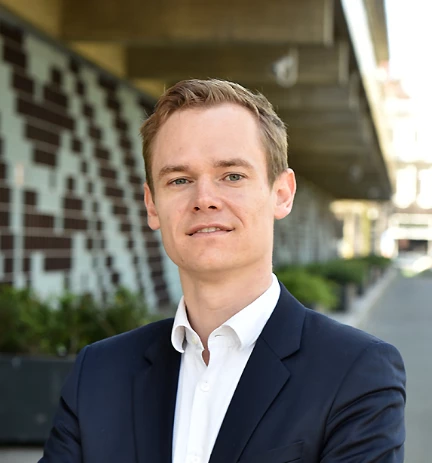 A farmer checks the quality of soil in his farm. | © Adobe Stock
A farmer checks the quality of soil in his farm. | © Adobe Stock
The Philippines is one of the most vulnerable countries in the world to climate-related natural catastrophes. Their economic and social impacts, such as the loss of physical capital, reduced workers’ earnings, productive outputs, and costs to the government, pose risks for the country’s development agenda. The World Bank estimates that the economic damages from climate change could reach 13.6 percent of the country’s gross domestic product by 2040.1
The financial sector could play a fundamental role in supporting the achievement of the Philippines’ climate goals through mobilizing private financing to support mitigation and adaptation, especially given limited fiscal space, while also managing its own vulnerability to climate-related risks.
Over the past four years, the World Bank Group has partnered with authorities and other stakeholders in the Philippines to gain a better understanding and assessment of climate change and environmental risks and opportunities for the financial sector. This work has provided a solid basis for the World Bank team to support the authorities, through both advisory services and lending operations, in taking important and innovative policy actions to green the financial sector.
During the 2019–20 Financial Sector Assessment Program (FSAP), an in-depth diagnostic of the country’s financial sector conducted jointly with the International Monetary Fund, World Bank experts carried out a first-of-its-kind assessment of climate change and environmental risks and opportunities for the Philippines, proposing a comprehensive range of policy recommendations. These included assessing and managing climate risks through in-depth technical analysis, developing supervisory guidelines for financial institutions and improving information collection, deepening green financial markets through development of a strategic approach, establishing consistency and clarity on what constitutes green finance, diversifying instrument offerings, and building the capacity of relevant authorities.
The World Bank’s financial sector program in the Philippines has since focused on supporting the authorities in turning these findings and recommendations into concrete policy actions and solutions. The World Bank team has worked closely with the Central Bank of the Philippines (Bangko Sentral ng Pilipinas), the Securities and Exchange Commission, and the Insurance Commission to advance the rollout of critical regulatory reforms to green the financial sector in alignment with international best practices. These reforms include a strategic approach to green and sustainable finance, guidance for financial institutions to incorporate climate change into risk management and assessment, regulatory incentives to integrate sustainability principles into capital market activities, and a taxonomy to classify and label green financial instruments, among others.
Policy reforms aim at enabling more private financing and deepening the green financial market, which is underdeveloped relative to an estimated US$ 168 billion in green investment opportunities that could generate 3 million cumulative new direct jobs by 2030. The sustainable finance taxonomy is a case in point. Studies have identified a marked gap in climate-related information as among the most significant market imperfections hampering investments in green and sustainable activities. Information constraints stem from a lack of transparency around and lack of definition of green and sustainable assets, which makes it difficult for financial institutions as well as for investors to identify what is green, contributing to increased market uncertainty. It also increases the risks of greenwashing: the practice of misleadingly presenting an investment project as contributing to environmental sustainability, even if its contribution is negligible. With the support of the World Bank and in close consultation with financial market participants, the Financial Sector Forum (FSF) has developed a sustainable finance taxonomy which provides a common standard and classification of green and sustainable financial assets by ensuring that the economic activities funded by these assets makes a material positive contribution to a sustainability objective and avoids harming other objectives. This reform is expected to help increase green and sustainable lending and bond issuances by alleviating the information constraint.
Since most emerging markets and developing economies, including the Philippines, are in the nascent stage of understanding the implications of climate change for the economy and the financial sector, building the necessary capacity is a priority. Following the detailed assessment of climate-related physical risk for the financial sector conducted during the 2019–20 FSAP, the World Bank team worked closely with the Central Bank of the Philippines to build in-house capacity through a climate transition risk assessment. Each step of the exercise was conducted through hands-on collaboration, allowing in-house capacity-building in preparation for future independent supervisory risk assessments as well as guidance to financial institutions.
Climate and environmental risk and opportunities are becoming an increasingly important topic area for financial systems around the world, including in emerging markets and developing economies. For the Philippines, the World Bank’s advisory and lending engagements in this growing area are anchored in solid analytical underpinnings through core diagnostics and analysis, a focus on client interest and demand, and cooperation with other development partners and external stakeholders. These efforts aim to mobilize much-needed resources for sustainable economic development. Financial sector authorities could continue to play a lead role in strengthening the enabling policy environment and ecosystem to deepen the sustainable finance market.





Join the Conversation